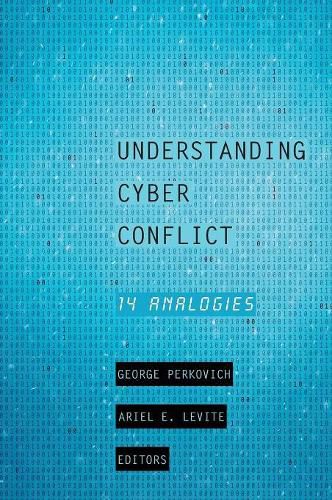Readings Newsletter
Become a Readings Member to make your shopping experience even easier.
Sign in or sign up for free!
You’re not far away from qualifying for FREE standard shipping within Australia
You’ve qualified for FREE standard shipping within Australia
The cart is loading…






Cyber weapons and the possibility of cyber conflict-including interference in foreign political campaigns, industrial sabotage, attacks on infrastructure, and combined military campaigns-require policymakers, scholars, and citizens to rethink twenty-first-century warfare. Yet because cyber capabilities are so new and continually developing, there is little agreement about how they will be deployed, how effective they can be, and how they can be managed. Written by leading scholars, the fourteen case studies in this volume will help policymakers, scholars, and students make sense of contemporary cyber conflict through historical analogies to past military-technological problems. The chapters are divided into three groups. The first-What Are Cyber Weapons Like?-examines the characteristics of cyber capabilities and how their use for intelligence gathering, signaling, and precision striking compares with earlier technologies for such missions. The second section-What Might Cyber Wars Be Like?-explores how lessons from several wars since the early nineteenth century, including the World Wars, could apply-or not-to cyber conflict in the twenty-first century. The final section-What Is Preventing and/or Managing Cyber Conflict Like?-offers lessons from past cases of managing threatening actors and technologies.
$9.00 standard shipping within Australia
FREE standard shipping within Australia for orders over $100.00
Express & International shipping calculated at checkout
Cyber weapons and the possibility of cyber conflict-including interference in foreign political campaigns, industrial sabotage, attacks on infrastructure, and combined military campaigns-require policymakers, scholars, and citizens to rethink twenty-first-century warfare. Yet because cyber capabilities are so new and continually developing, there is little agreement about how they will be deployed, how effective they can be, and how they can be managed. Written by leading scholars, the fourteen case studies in this volume will help policymakers, scholars, and students make sense of contemporary cyber conflict through historical analogies to past military-technological problems. The chapters are divided into three groups. The first-What Are Cyber Weapons Like?-examines the characteristics of cyber capabilities and how their use for intelligence gathering, signaling, and precision striking compares with earlier technologies for such missions. The second section-What Might Cyber Wars Be Like?-explores how lessons from several wars since the early nineteenth century, including the World Wars, could apply-or not-to cyber conflict in the twenty-first century. The final section-What Is Preventing and/or Managing Cyber Conflict Like?-offers lessons from past cases of managing threatening actors and technologies.